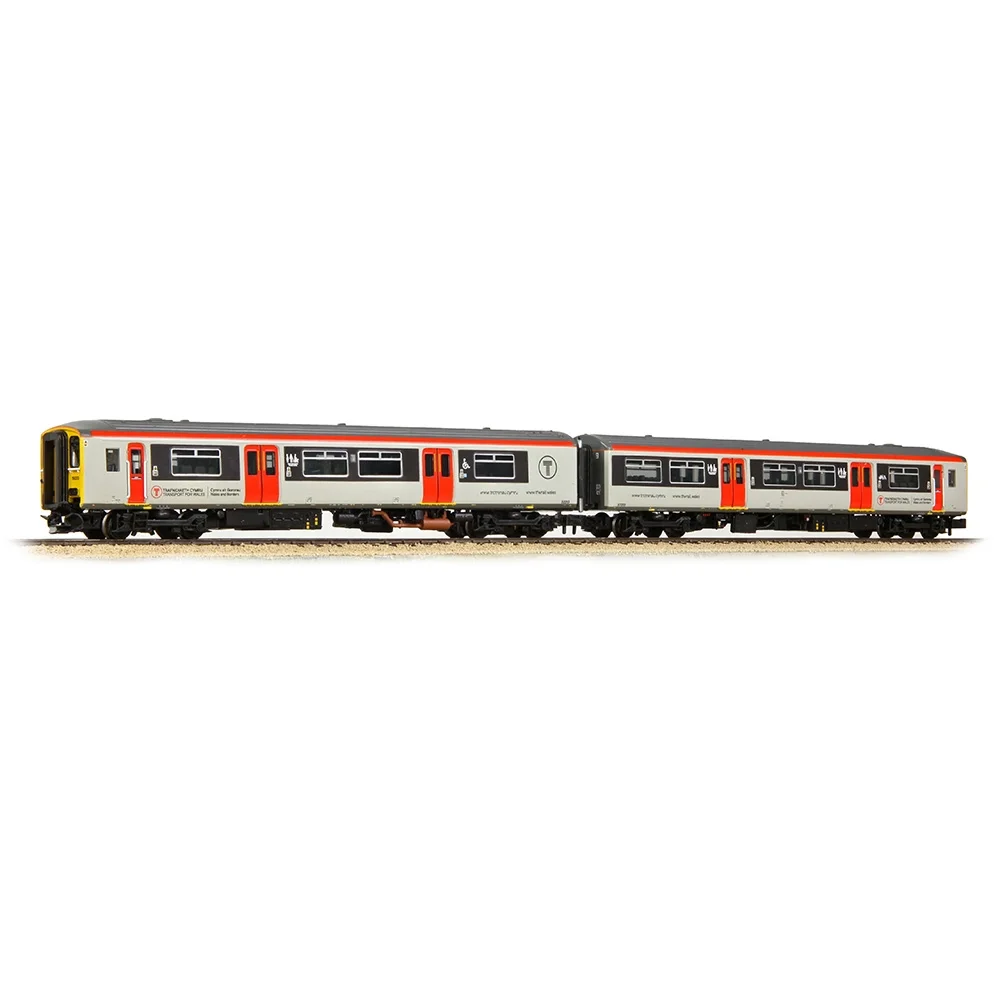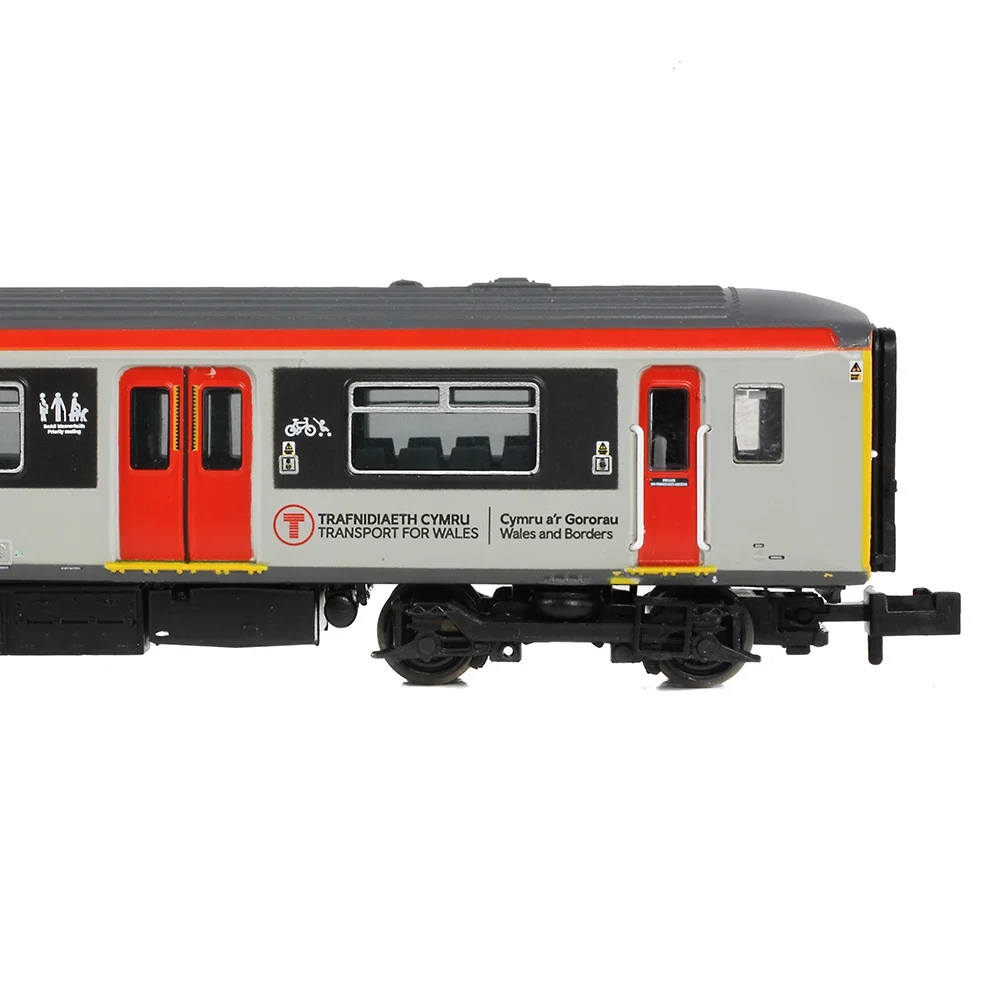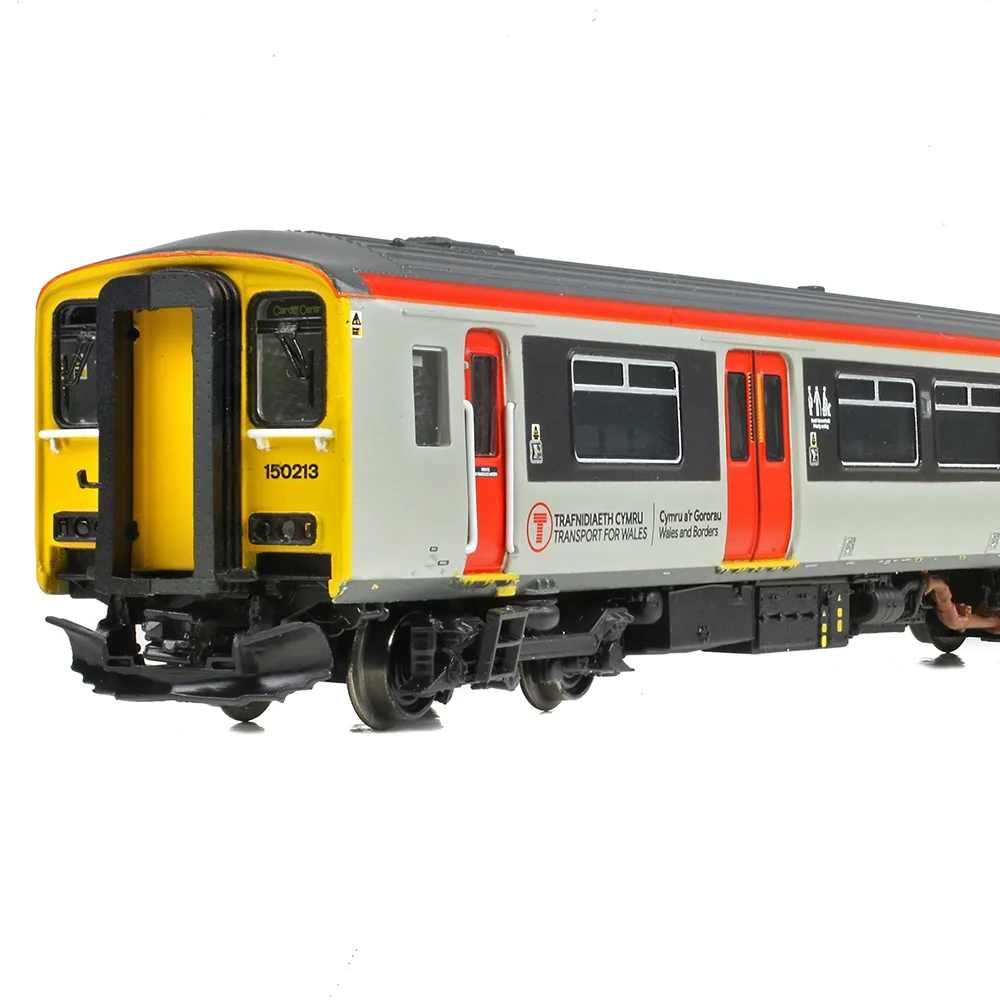Graham Farish 371-339SF
British Rail Class 150/2 150213 Transport for Wales Red & Grey
Graham Farish's Description & Specifications
In 2019, Bachmann upgraded the Graham Farish Class 150 DMU tooling to include provision for sound fitting, marking the first time SOUND FITTED versions became available for this class. The upgrade featured an enhanced chassis design to accommodate sound equipment, with all models now factory-fitted with speakers - even non-sound versions to assist modellers wishing to fit their own decoders.
SOUND FITTED models offer synchronized sound effects on both analogue (DC) and DCC control systems, providing authentic audio straight from the box. This upgrade maintained the existing 6-pin DCC interface while adding the new sound capabilities, ensuring compatibility with the established Class 150 range while bringing the models up to modern sound-equipped standards.
The 2019 announcement included both upgraded existing liveries and new variants, continuing the model's availability in multiple operator schemes whilst offering modellers the choice between sound-fitted and traditional versions.
The Class 150 Diesel Multiple Unit (DMU) is an enduring design, first introduced in 1984 much of the fleet remains in service today with operators including Transport for Wales (TfW). The striking white, red and grey livery of TfW adorns the Graham Farish Class 150 DMU for the first time and we’ve selected 150/2 No. 150213 as the subject for this sublime N Scale model which comes complete with SOUND FITTED. The 150/2 sub-class is characterised by the gangway doors fitted to the cab ends, allowing two or more units to work in multiple whilst allowing access from one unit to another.
Constructed from a highly detailed bodyshell which is adorned with separate components like the cab front handrails, gangway connectors and exhaust, the Graham Farish model replicates the Class 150/2 faithfully. The chassis boasts a suite of parts to depict the engine, drive train, electrical gear and auxiliary equipment, while inside the model, passenger seating is included along with cab detail. The livery application, using authentic colours and accurate typefaces and logos just enhances the model’s good looks, while the powerful and smooth drive mechanism and pre-fitted DCC decoders in this SOUND FITTED model makes the Class 150 DMU the perfect addition to any modern N scale collection.
- Graham Farish N Scale
- Era 9
- Pristine Transport for Wales livery
- Running No. 150213
- Comprises Car Nos. 52213 and 57213
- Destination Blinds for Cardiff Central
- Accessory Pack
- NEM Coupling Pockets
- Powerful 3 Pole Motor with Flywheel
- Interior Detailing
- Directional Lighting
- SOUND FITTED – Fitted with a Zimo MX649N DCC Sound Decoder (and a Zimo MX671N DCC Decoder in the trailer vehicle)
- Length 290mm
Class & Prototype
- Class: British Rail Class 150/2
- Traction: Diesel Multiple Unit
- Built: 1986-1987
- Total Built: -
- Running Number: 150213
The BR Class 150 Sprinter pioneered the second-generation DMU revolution that transformed British regional railways from 1984. Built by BREL York, 137 units introduced Mark 3 coach technology, Cummins diesel engines, and modern passenger amenities to replace aging heritage DMUs. Featuring unique 1/3 and 2/3 door positioning and 75mph capability, they served extensively across Great Britain on suburban and branch line services. Still operated by Great Western Railway, Northern, West Midlands Trains, and Transport for Wales after four decades, with unit 150231 achieving preservation status at Mid Hants Railway in 2025. Available as detailed models from Bachmann (OO) and Graham Farish (N gauge) in multiple liveries spanning their extensive operational history.
Operator & Livery
- Operator: Transport for Wales
- Livery: Red & Grey
- Era: 9 - Privatisation
Transport for Wales is a Welsh Government-owned not-for-profit company established in 2015 to transform transport across Wales. Through its subsidiary Transport for Wales Rail Limited, which took over the Wales & Borders franchise in February 2021, it operates passenger services across Wales and border regions with 248 stations including all 223 Welsh stations. The company is revolutionising Welsh railways through the £5 billion South Wales Metro project, introducing 148 new trains including innovative Stadler tram-trains, and developing integrated transport networks. Operating modern CAF Class 197s, Stadler FLIRT units, and pioneering Class 398 battery-electric tram-trains, Transport for Wales represents the cutting edge of sustainable public transport delivery whilst serving over 30 million passenger journeys annually across the Welsh rail network.
The Transport for Wales livery features a clean, modern design consisting primarily of white bodywork with distinctive red doors and window surrounds. The scheme is described as "red and white" with trains appearing "white with red doors", creating a striking contrast that represents Welsh national colours. Transport for Wales describes it as their "distinctive red and grey livery", though the base colour appears predominantly white in practice.
The livery includes several distinctive elements: a "Pendolino inspired black band around the windows" that adds visual definition, and yellow warning panels on driving car fronts for safety compliance. On Class 67 locomotives, "the grey is darker than on the 175s but the red is the same", showing slight variations across different vehicle types. The newer CAF Class 197 trains feature what enthusiasts call "Cloud Cover Grey" rather than pure white, giving a more sophisticated appearance.
The livery was designed to be practical and cost-effective whilst maintaining Welsh identity through the prominent use of red - one of Wales' national colours. Application involves vinyl wrapping for the main colour scheme, though warning yellow sections are painted. This modern, minimalist approach ensures high visibility of the Transport for Wales branding whilst providing a clean, professional appearance across the diverse fleet.



